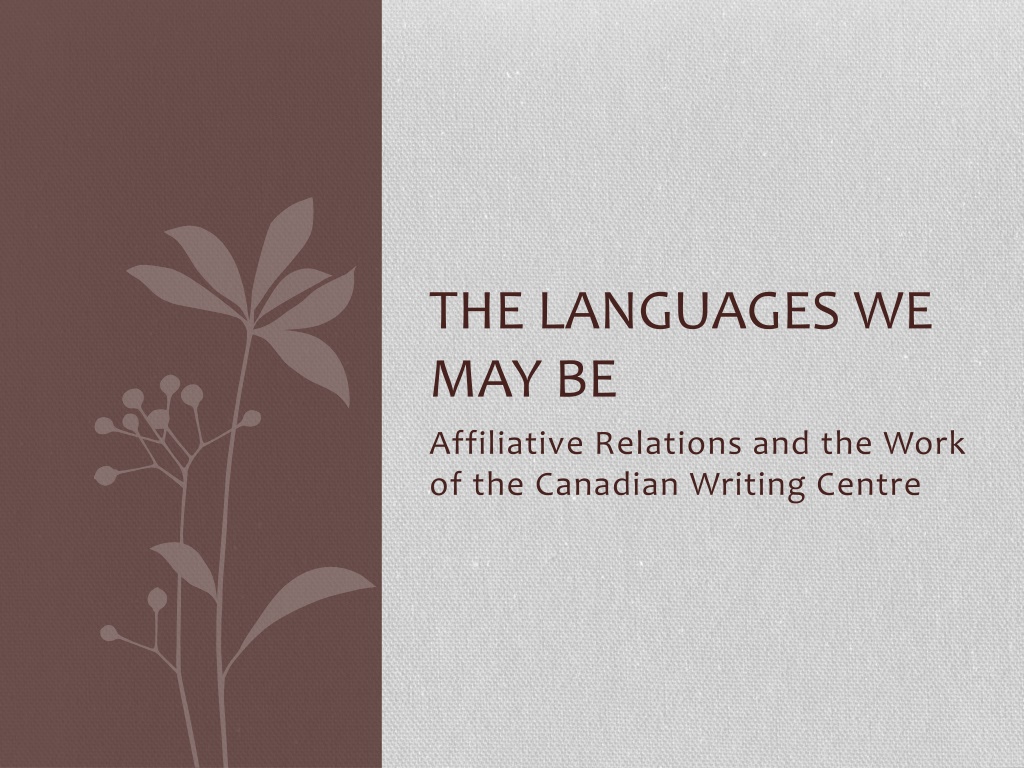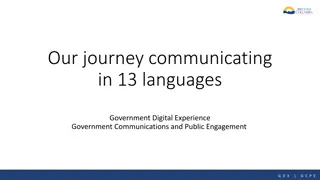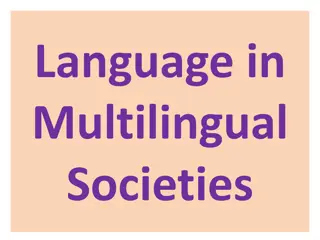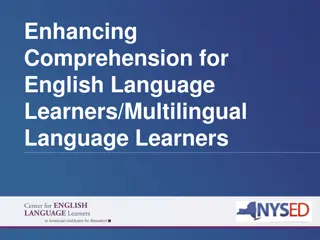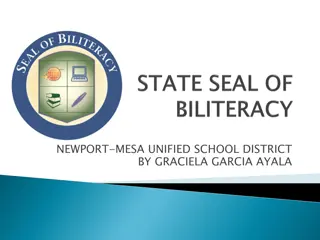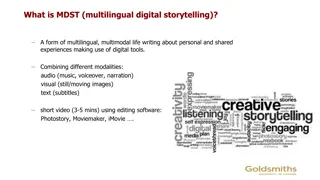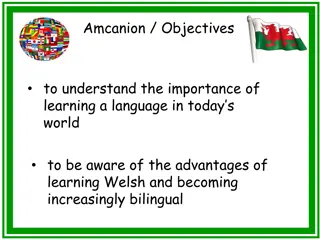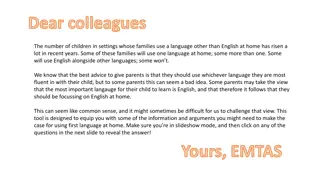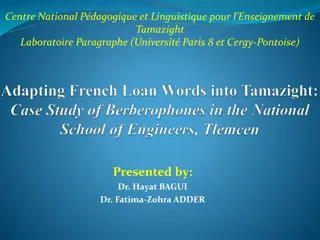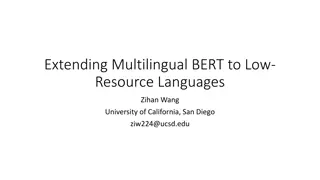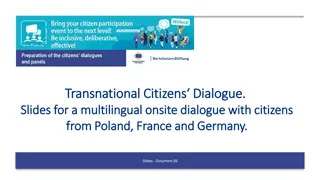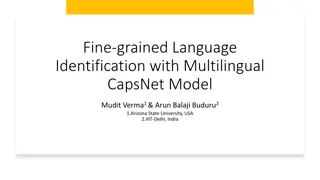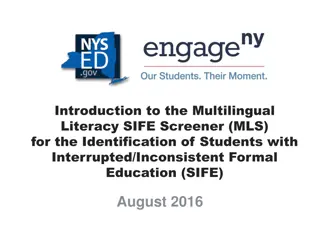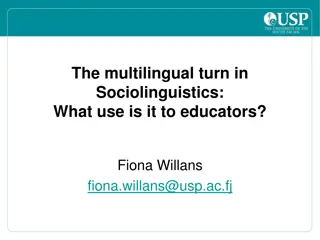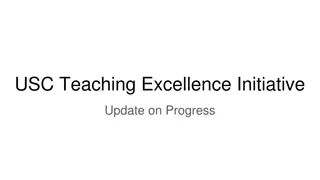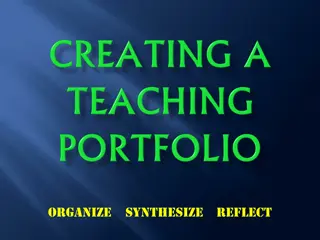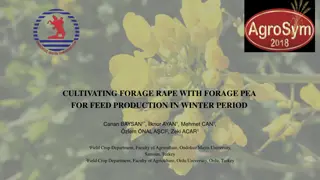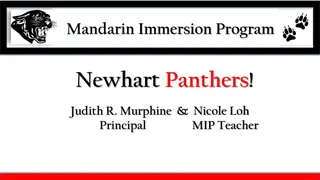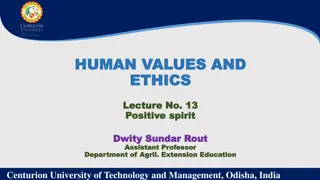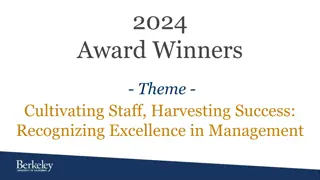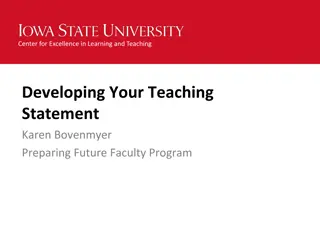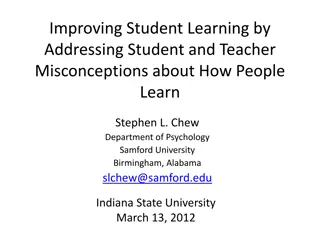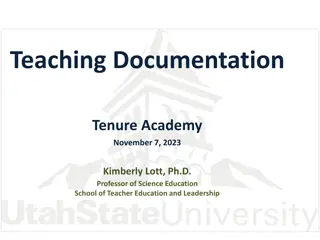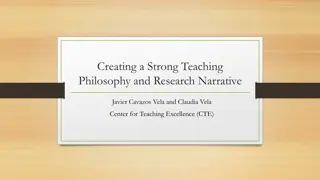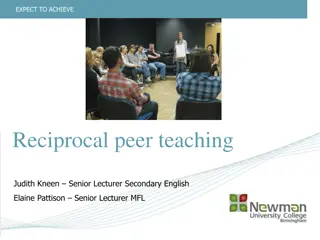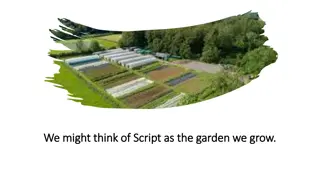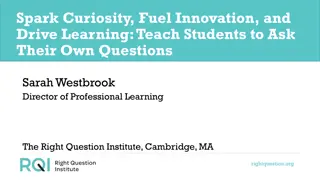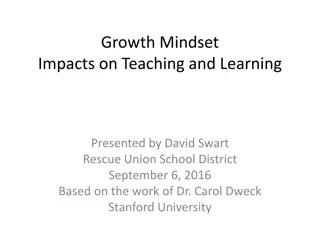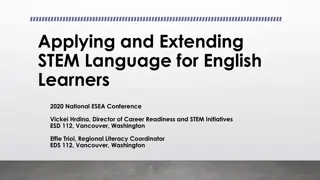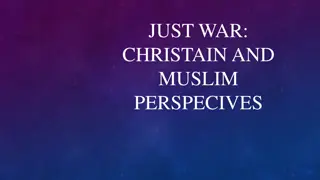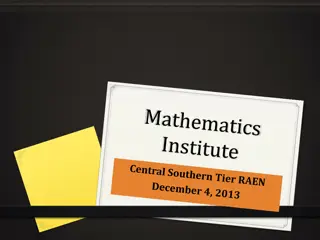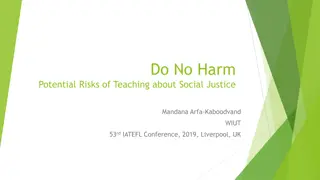Cultivating Multilingual Teaching for a Just World
Balancing short-term student needs with long-term responsibilities, this approach embraces equity, language diversity, and rhetorical agency to foster a fairer educational landscape for present and future generations. Emphasizing reciprocity and courage in teaching relationships, it seeks to challenge injustice and intolerance while celebrating multilingualism as a valuable resource for learning and connection across cultural divides.
Uploaded on Oct 08, 2024 | 0 Views
Download Presentation

Please find below an Image/Link to download the presentation.
The content on the website is provided AS IS for your information and personal use only. It may not be sold, licensed, or shared on other websites without obtaining consent from the author. Download presentation by click this link. If you encounter any issues during the download, it is possible that the publisher has removed the file from their server.
E N D
Presentation Transcript
THE LANGUAGES WE MAY BE Affiliative Relations and the Work of the Canadian Writing Centre
BECAUSE WHEN YOU ARE IMAGINING, YOU MIGHT AS WELL IMAGINE SOMETHING WORTH WHILE. L.M. MONTGOMERY, ANNE OF GREEN GABLES
Clouds, Lake Superior, 1923 Lawren S. Harris
KEY CONCEPTS Balancing between the Small-Here/Short-Now needs and interests of student writers within our current institutions and the Big-Here/Long-Now responsibilities we bear to teach with awareness of our colonial past and its aftermath with which our students continue to contend and to teach toward a more just, more fair, more balanced world not only for our current students, but for the many generations of students to come. Cultivating teaching practices richly informed by shared principles of equity and welcome, moderation and wisdom, a tolerance for complexity and ambiguity, patience and an attending willingness to both work and to wait for that consensus achievable through balanced and fair relations Practicing a willingness to engage courageously and determinedly with the evidence that injustice, intolerance, extremism, a desire for quick answers and certitudes, impatience, and self interest continue to cause suffering particularly for students from historically oppressed and marginalized communities Recognizing the rich resource multilingualism represents for teaching and learning all languages as well as for coming to know, care for, and affiliate more deeply with one another across lines of difference Helping students to cultivate rhetorical agency by allowing encouraging even experimentation with language and convention Accepting responsibility for reciprocity in teaching and learning relationships by opening ourselves to the possibility of learning with and from our students their languages, cultures, and rhetorical traditions even as we teach them to speak, write, and produce new knowledge in our nation s official languages
WRITING PROMPTS SECTION ONE PAIRS: Quickly draft a paragraph in which you introduce yourself composed of a single sentence. Play with punctuation within your sentence, using as many marks as you can to suggest to your readers the relationship between ideas within your text. Your objective is to carry your reader with you from the surface a question, problem, or perspective you have to its deeper meanings and significances, without breaking off your sentence. SECTION TWO PAIRS: Quickly draft a text in which you introduce yourself by combining, in whatever way you choose, multiple languages. Your objective is to draw upon your multiple fluencies to help your readers understand better and more deeply and to do so in ways that are clearly purposeful rather than accidental. SECTION THREE PAIRS: Quickly draft a list of all the obstacles and objections you can think of to doing any of the work we ve discussed today, including the use of the above writing prompts to teach students writing
Clouds, Lake Superior, 1923 Lawren S. Harris
